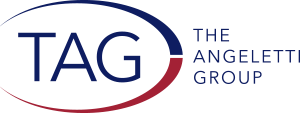By Suzanne Albin
Strategic planning is essential for any organization aiming for long-term success. Often driven by staff, the process can be mundane and uninspiring for Board members. Transforming a disengaged Board into an enthusiastic, committed team and partner requires a structured approach. Here’s how to energize your Board for a meaningful and impactful strategic planning process:
1. Prepare a Solid Foundation
Creating an engaged Board starts well before the strategic planning process begins. Establish a culture of engagement by regularly providing opportunities to engage Board members in meaningful discussions and decisions. Foster open communication, encourage participation in meetings, and ensure that members feel their contributions are valued. Fostering a foundation of trust and engagement will be critical when it’s time to develop your strategic plan.
2. Establish a Framework
To develop a successful strategic plan, start by identifying its purpose, with input from key stakeholders. This collaborative approach ensures that everyone understands the importance of the plan and is invested in its success. Clearly define the process that will be used to create the plan and set a timeline for major milestones. This structured framework provides clarity and sets expectations for all involved, minimizing confusion and fostering a sense of shared purpose.
3. Communicate Clearly
Clear communication is crucial throughout the strategic planning process. Set expectations early by explaining the process, the role of Board members, and the expected outcomes. Identify Board members who will serve as internal leaders to guide and motivate others. By providing a clear roadmap and designating leaders, you ensure that everyone knows their responsibilities and the importance of their involvement.
4. Create Opportunities to Engage
Once a rough draft of the strategic plan is ready, schedule a dedicated Board retreat to discuss it in depth. This retreat should be a collaborative and interactive session where members can voice their opinions, debate different aspects of the plan, and work towards consensus. Such retreats not only refine the plan but also help Board members feel more connected to the organization’s vision and more confident in approving the final document.
5. Monitor and Evaluate
The strategic planning process doesn’t end with the approval of the plan. Assign staff to partner with board members to champion and lead different segments of the plan. Regular updates to the Board at predetermined intervals ensure continuous engagement and accountability. This ongoing monitoring allows the Board to track progress, celebrate achievements, and address any challenges promptly.
6. Stay Flexible
Finally, it’s essential to remain flexible and adapt to changes in the industry landscape, economic factors, or other variables. Help the Board to stay informed about external changes and be prepared to pivot the strategic plan as needed. This adaptability ensures that the organization can respond effectively to unforeseen challenges and opportunities, maintaining the relevance and impact of the strategic plan.
Energizing your Board for an impactful strategic planning process involves more than just occasional meetings and updates. By preparing a foundation of engagement, establishing a clear framework, communicating effectively, creating opportunities for meaningful participation, monitoring progress, and staying flexible, you can transform a disengaged Board into a dynamic, committed team. This approach not only enhances the strategic planning process but also strengthens the overall governance and effectiveness of your organization.
The Angeletti Group offers strategic planning services to guide your organization through the critical exercise of creating a vision for the future and a plan to reach it. Contact info@theangelettigroup.com today to get started.


